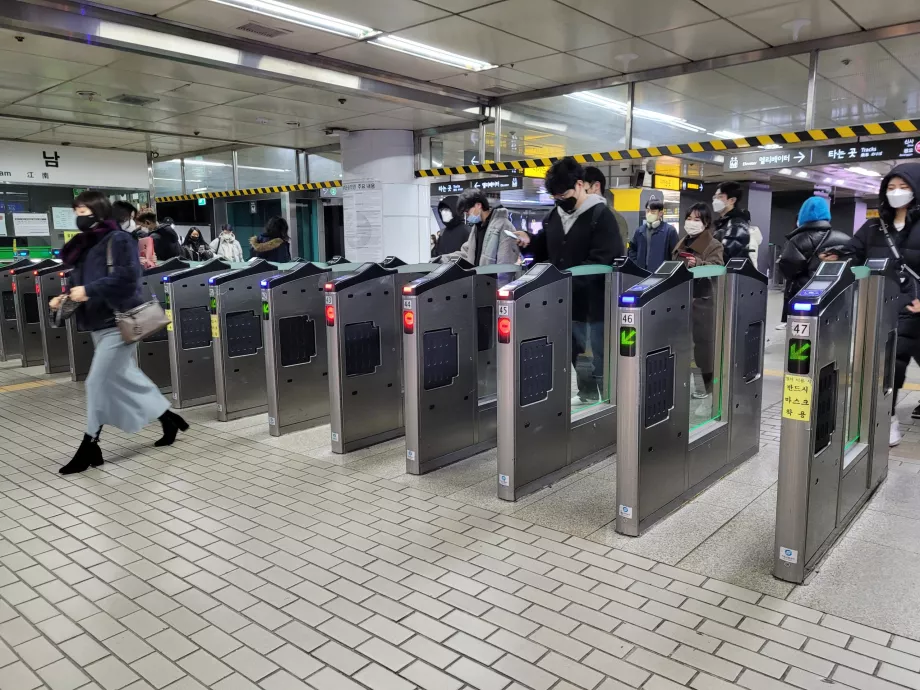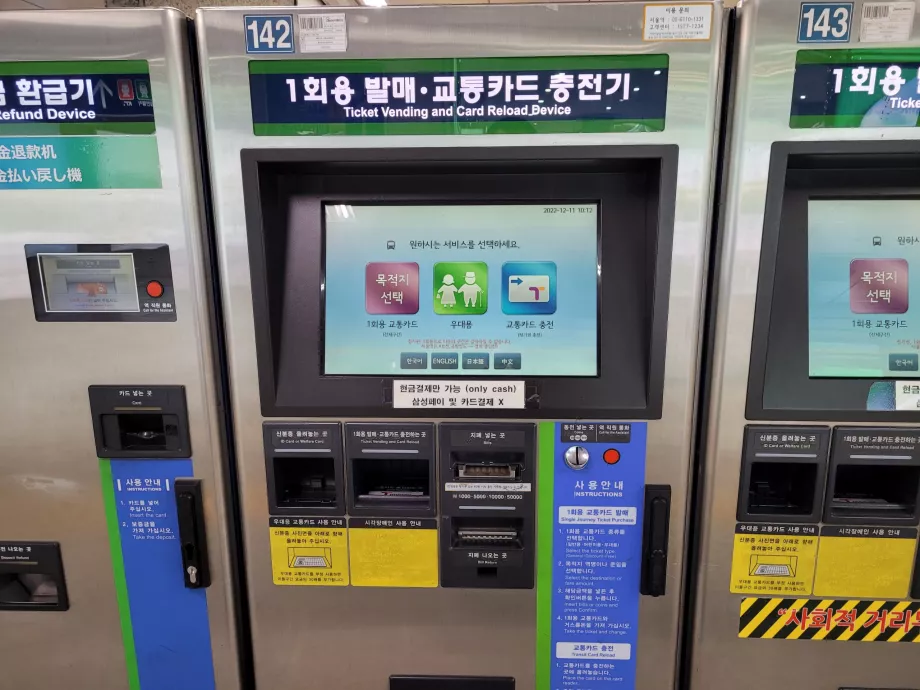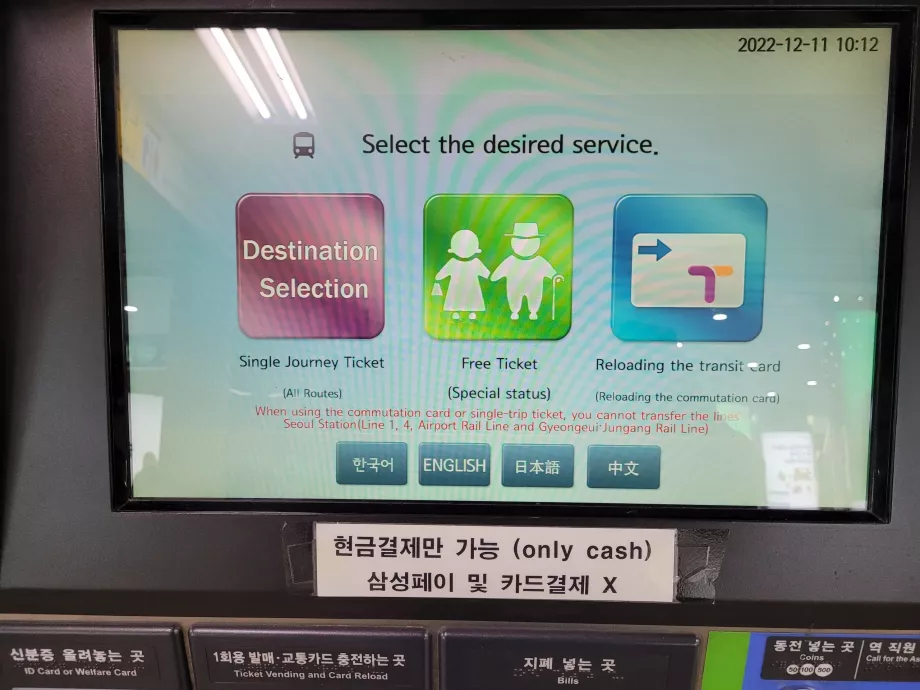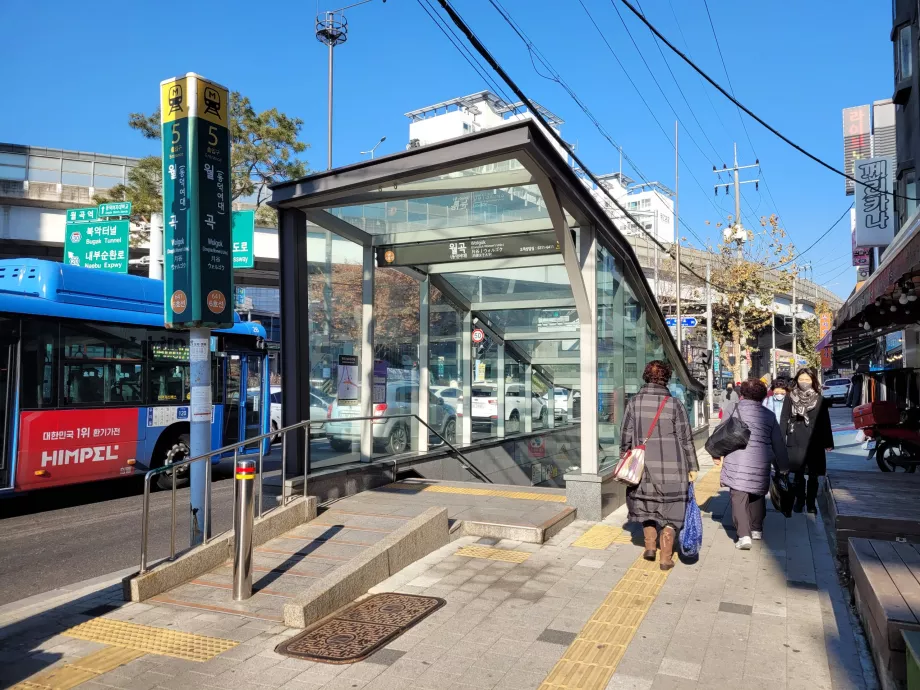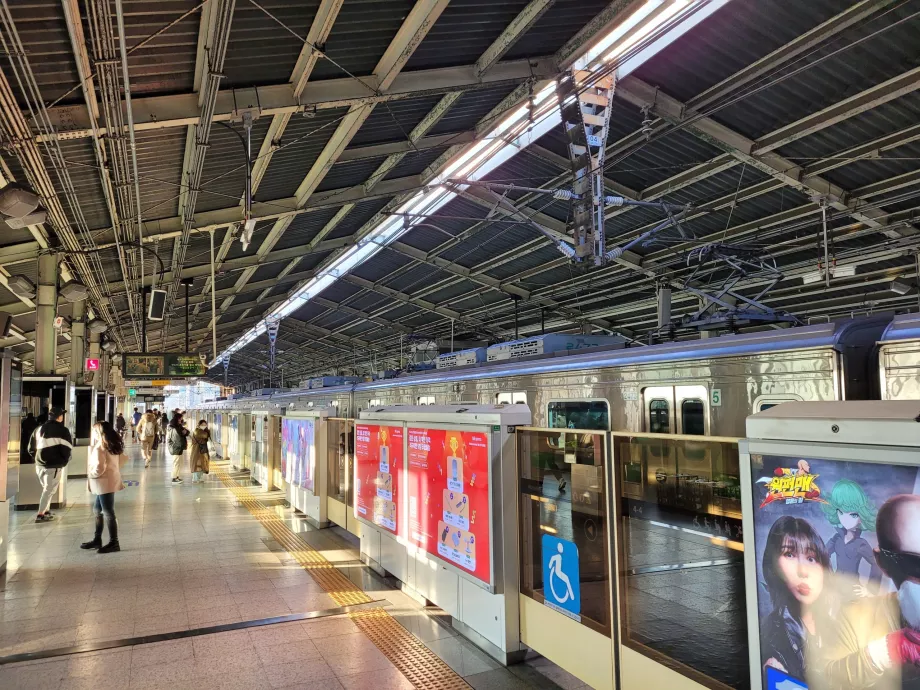Metro di Seoul
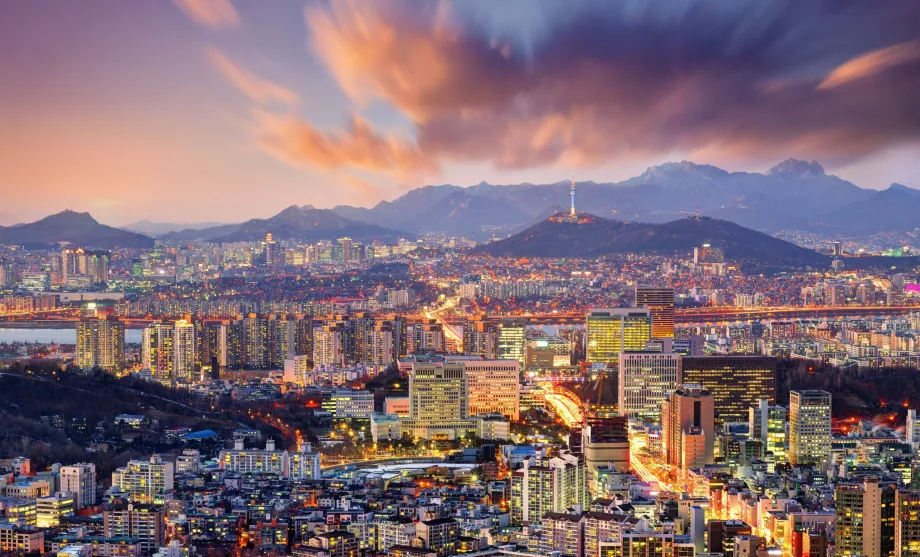
Travelling by metro in Seoul is the most efficient way of transportation. The subway will take you to all the tourist attractions, and while sometimes the bus ride may be more direct and shorter, the subway is much more convenient. Plus, it doesn't suffer from traffic lights, which makes travelling by bus or taxi significantly longer.
How many subway lines are there in Seoul? How much do tickets cost and which types of tickets are worth it? Find the answers below.
Metro lines in Seoul
A total of 21 subway, commuter rail or automatic train lines crisscross the Seoul metropolitan area.
While there are only 9 official subway lines in Seoul proper (+ 2 in the adjacent city of Incheon), all other rail lines are interconnected with the same fare and system.
So there's no need to deal with whether you're currently taking the subway, train, or automatic subway. Everything runs on a single system Seoul Metro.
Map of Seoul Metro
The best way to navigate the Seoul Metro is to view the map and plan your journey in advance. The jumble of lines in the centre is quite confusing at first glance and you'll be unnecessarily delayed if you plan your journey at the station.
A very clear interactive map with route search and exact fares is available on the official website: www.seoulmetro.co.kr
Fares and ticket types
On the Seoul Metro, you always pay per route travelled. There are also day passes or multi-day passes, but these are not very useful. For a detailed overview of tickets that are valid for buses and in some cases even in other Korean cities, see the Transport chapter.
Ticket prices
However, we will also summarise the basic ticket price options in this chapter. Fares are calculated according to distance.
- Basic fare - 1 250 krw with a transport card (T-money/Cashbee), 1 350 krw for a single ticket
- All-day Mpass - 10 000 krw (+ 5000 krw deposit, of which 500 krw will reimburse you when you take your card away)
Fares are calculated by distance travelled and increase incrementally. The fare with a transport card (T-money/Cashbee) is always 100 krw lower than with a regular single ticket.
If you go from one end of Seoul to the other, you pay around 1 800 krw, if you go further out of town, you can also pay through 3 000 krw.
To calculate the exact fare and the fastest route, visit: www.seoulmetro.co.kr/en. Click on the departure station on the map and select the "DPT." box. Then find the destination station, click and select the box "ARV." On the left side of the page you will see the fastest route and the exact fare.
How to use the ticket?
If you're travelling with a T-Money, Cashbee or Mpass transport card, you don't need to stop at a ticket machine. You only need to top up your credit once in a while, which is gradually deducted from the cards.
Each metro station is equipped with turnstiles that are bi-directional. You always go through the one with the green arrow, attach your card to the reader and walk freely.
The same process awaits you when exiting the station.
You do not go through the turnstiles when transferring.
You can buya single ticket from the machines at each metro station. You can only pay with cash, both coins and banknotes. Select English in the bottom bar of the machine and then select "Destination Selection". You then select the destination station on the touchscreen map and the fare is calculated accordingly. A card will pop up, which you attach to the turnstile when entering and exiting the station.
Timetables and intervals
The metro in Seoul runs from about 5:00 am to 11:30 pm (final departures), which means that the train will always be about 30 to 40 minutes late from the center.
The intervals for each line can be surprisingly long, ranging between 5 and 10 minutes on weekdays and 7 and 11 minutes on weekends.
Metro stations
At first glance, the metro stations are rather poorly signposted from the outside. Especially in the centre, where the metro runs entirely underground, the entrances to the metro are hardly marked at all. Just look for the entrance to the underpass, which in most cases will also be the entrance to the station.
Then on the outskirts of downtown and outside Seoul, most lines are elevated, so you can find the station very quickly.
Numbered exits from subway stations are a very handy feature. Especially the transfer stations are often a labyrinth. When you get off the train, you can find a large map of the station area either directly on the platform or in the lobby one floor up, which is also in English. All the exits are marked with a number. Choose the one that suits you and just follow the clear signs.
Google maps are also a great help, as the exit numbers are always marked in a yellow rectangle.
At all metro stations, the platform is separated from the tracks and trains by a glass wall with automatic doors. All doors open automatically, no buttons need to be pressed.
Toilets can be found at every metro or train station and are always free of charge. The toilets in the Seoul metro are clean and modern.
Descriptions and announcements in English
The Seoul metro is relatively easy to find your way around. All essential information is described in both Korean and English, and station announcements and important information are in English as well.
Ada pertanyaan lagi?
Jika Anda memiliki pertanyaan atau komentar tentang artikel ini...


